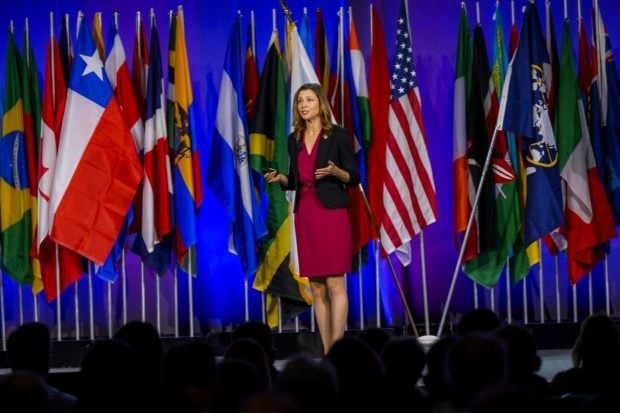"Whether or not that happens will depend on a number of factors, including what changes are made to the federal loan system and market and economic conditions," says Research Associate Courtney McSwain. "Private loans certainly are growing, and students are using private loans more, especially students pursuing professional degrees."
Some number-crunching reveals nearly a quarter of all students pursuing a professional degree have taken out a private loan, compared with 5% of all undergraduates and graduates. More than three-quarters of private loan borrowers also receive federal aid available through the Stafford loan program. "When we look at the overall pool of students taking out [private] loans, the majority of those students are undergraduates because the majority of the student population is undergraduate," McSwain says.
"But when you isolate among students in various levels, a greater percent of professional students take out private loans because costs are so high and the types of grants they can get are limited."
Recommended For You
Alisa Cunningham, IHEP managing director of research and evaluation, adds that about 5% of undergraduates and 5% of graduate students take out private loans. But among professional students–particularly those in medical or law school–about 25% seek private loans. The highest rate is among law students. Private loan borrowers tend to be students who attend private institutions, enroll full time for the entire school year, and work less than full time. They often come from middle-income families. So should credit unions be looking hard at getting into private student loans? "It's really an individual decision by the lender, depending on their profitability margins and other issues," Cunningham stresses. McSwain notes one impression the researchers took away from their study was how varied private loans can be and how they can be targeted to fit specific individuals.
"A point we heard from various people we talked to was concern about consumer education, and making sure that students taking out private loans understood what they were doing and how different interest rates would affect them both in the short term and the long term," she says.
"The [marketing] picture is changing. Another thing we heard consistently from lenders is growth in direct-to-consumer marketing. Traditionally, and primarily, private loans go through financial aid offices."
McSwain notes many lenders who are in the private loan market are also in the federal student loan market. Often students seeking private loans are maxing out on the federal loans, which present less risk to the lender, but some are turning to private loans even though they haven't borrowed their federal loan maximum.
"That's something to worry about," she advises. "Who are these students? From a policy perspective we don't want students to be so overburdened they drop out of school."
If you're a lender, she agrees, you have to do your homework and know what you're doing.
© 2025 ALM Global, LLC, All Rights Reserved. Request academic re-use from www.copyright.com. All other uses, submit a request to [email protected]. For more information visit Asset & Logo Licensing.







